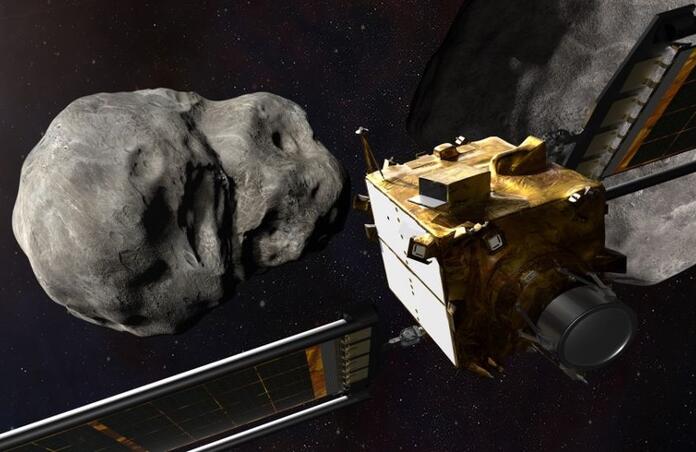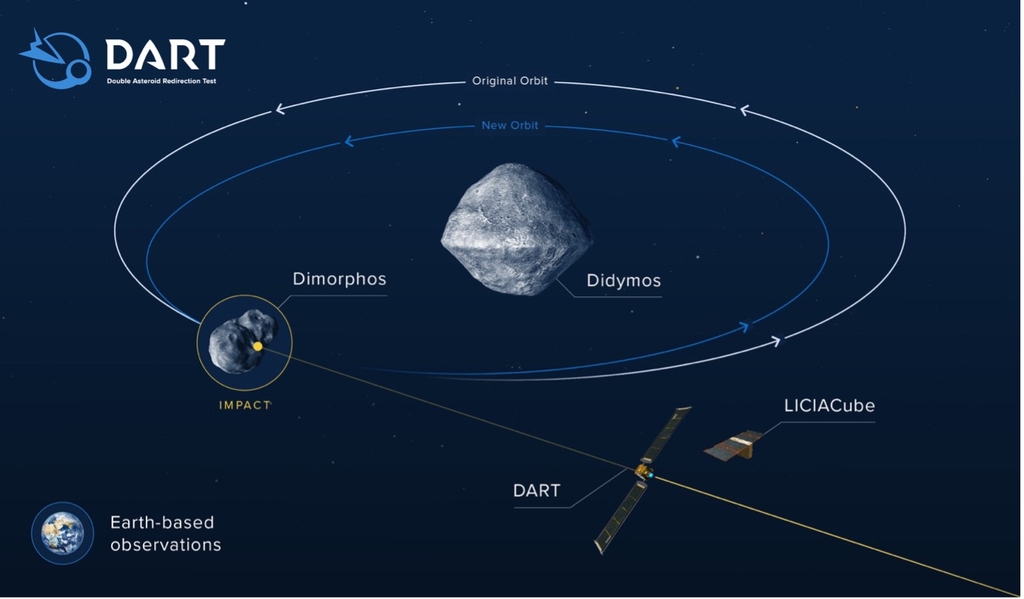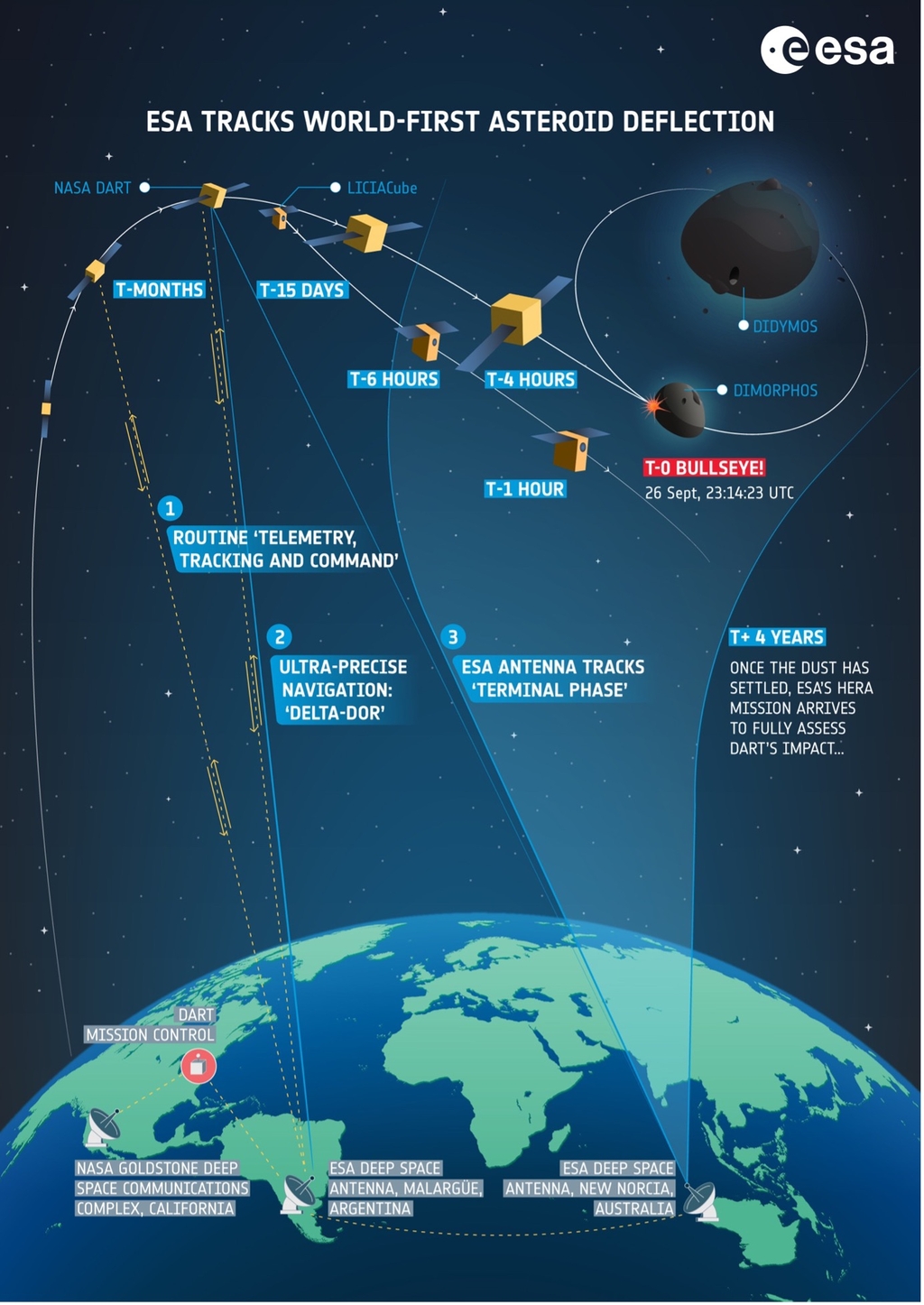DART Spacecraft Heads for Asteroid Impact

Time is ticking for the asteroid Didymos since in just 4 days’ time on the 26th of September NASAs Double Asteroid Redirection Test (DART) will make its impact as part of the first planetary defence experiment. The mission will aim to demonstrate asteroid deflection by a kinetic impactor, proving useful as a method for deterring any future hazardous asteroids.

The target binary asteroid system comprises of a larger asteroid Didymos spanning 780m and smaller moonlet Dimorphos. The moonlet has a diameter of 160m, orbiting Didymos at a distance of 1.18km and has a period of nearly 12 hours. The binary system is an ideal candidate for testing the deflection method, but poses no threat to us since it is not on a path to collide with Earth.
The DART spacecraft is set to crash into Dimorphos at a speed of 6.6 km per second on the 26th at 7.14pm EDT, a carefully chosen date due to the system being at its closest to earth, 11 million km away. This allows for high quality observations to be taken across the globe, contributing to the international observing campaign to determine the effect of the impact. Since the system is an eclipsing binary as viewed from earth, astronomers can measure the periodic variation in brightness of the system to determine the orbital period of Dimorphos before and after the impact to find out if there has been a change. NASAs aim is for the impact to push the moonlet slightly closer to Didymos, resulting in a decrease of its period of at least 73 seconds, however, researchers think the decrease might be closer to 10 minutes.

On board the spacecraft is the Didymos Reconnaissance and Asteroid Camera for Optical navigation, or DRACO. This is a high-resolution imager obtained from the new horizons LORRI camera, and will stream images taken before impact to earth in real time. Additionally, just before the crash it will provide high resolution images of Dimorphos’ surface, helping to characterise the impact site. DART also carries a CubeSat which has been contributed by Agenzia Spaziale Italiana (ASI) and named LICIACube. The spacecraft deployed LICIACube on the 11th of September with the aim of capturing images and recording data of the impact, resulting ejecta cloud and perhaps the impact crater on Dimorphos along with measuring the kinetic impact.
The main challenge for the spacecraft is to target and impact the moonlet accurately, so as part of Guidance, Navigation and Control (GNC) the DART team have developed algorithms called SMART Nav, an optical navigation system that will distinguish between the two bodies and direct the spacecraft towards the smaller asteroid within an hour of the impact. The spacecraft is also equipped with Roll Out Solar Arrays (ROSA), two large solar panels that have been deployed and extend 8.5m. DART is the first planetary spacecraft to fly the new arrays.
Following DART will be the Hera mission, a program in ESAs space safety and security activities that is planned to launch in 2024 and visit the binary system in 2026. During the mission, the spacecraft along with 2 CubeSats will collect data on both asteroids, with focus on the impact crater and a precise measurement of the mass of Dimorphos. If DART is successful, this is only the beginning of humankind learning about how to protect earth from any future threats.
--
Cover image: NASA/Johns Hopkins APL/Steve Gribben
Image credits:
- Johns Hopkins APL
- ESA
